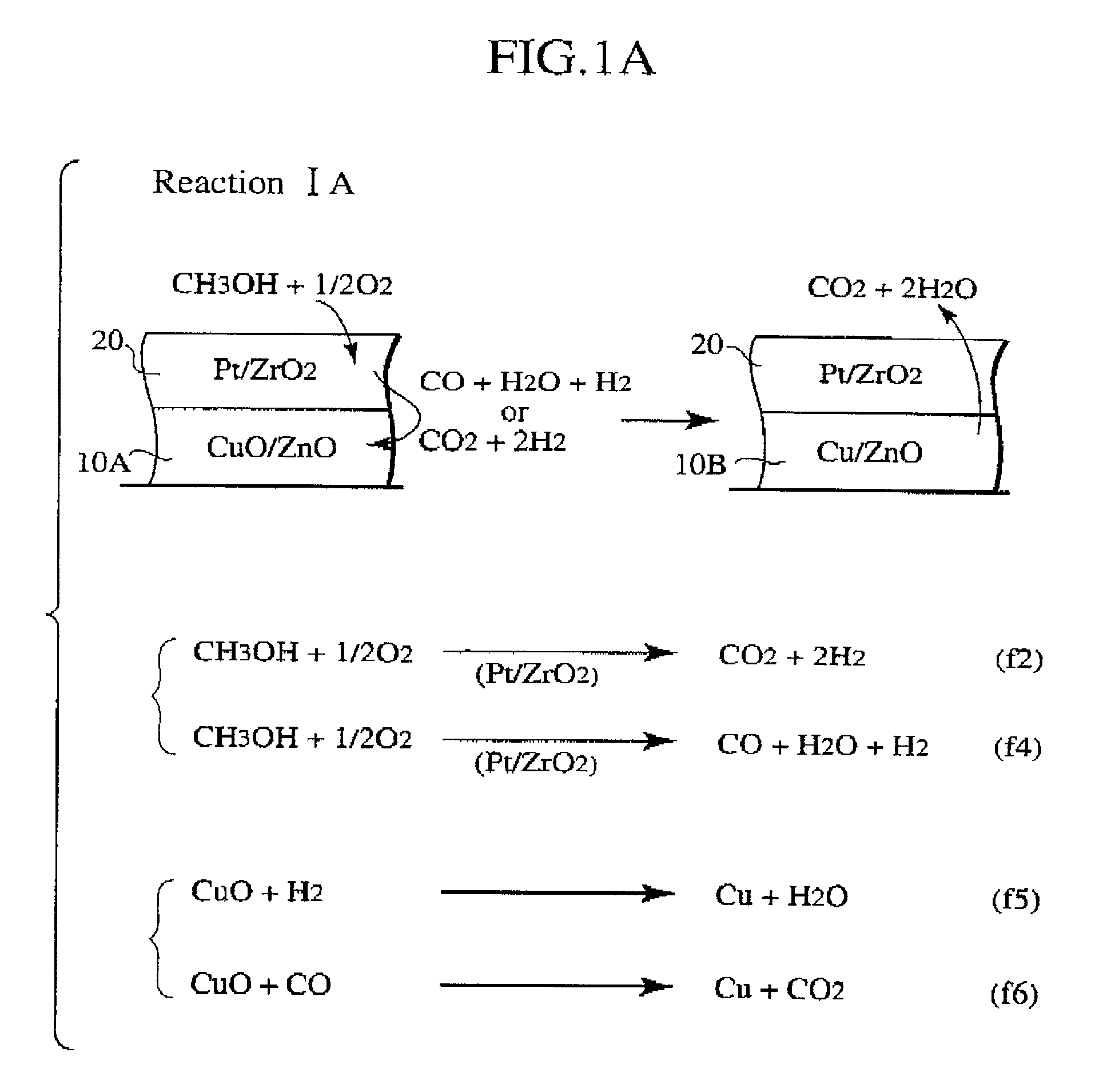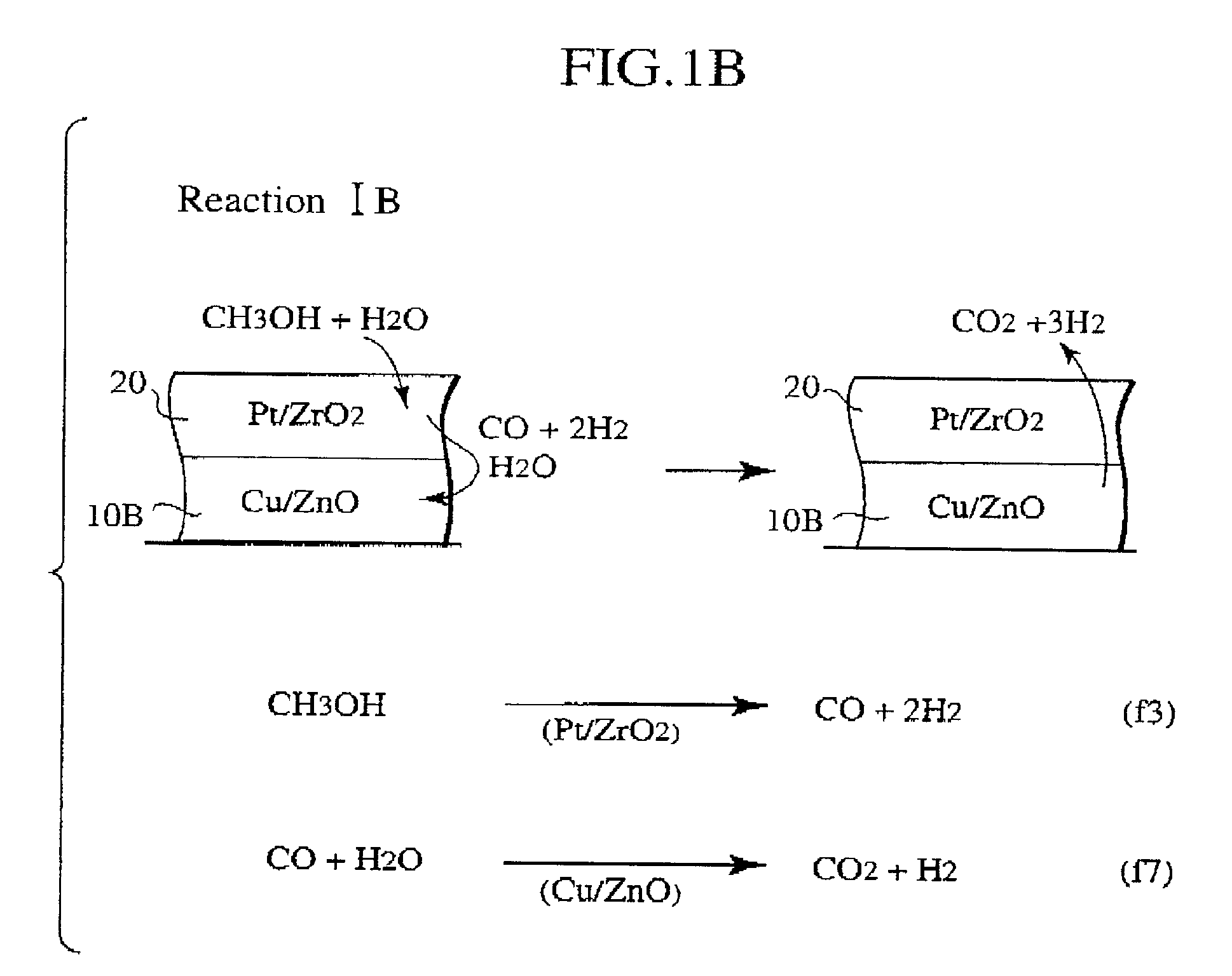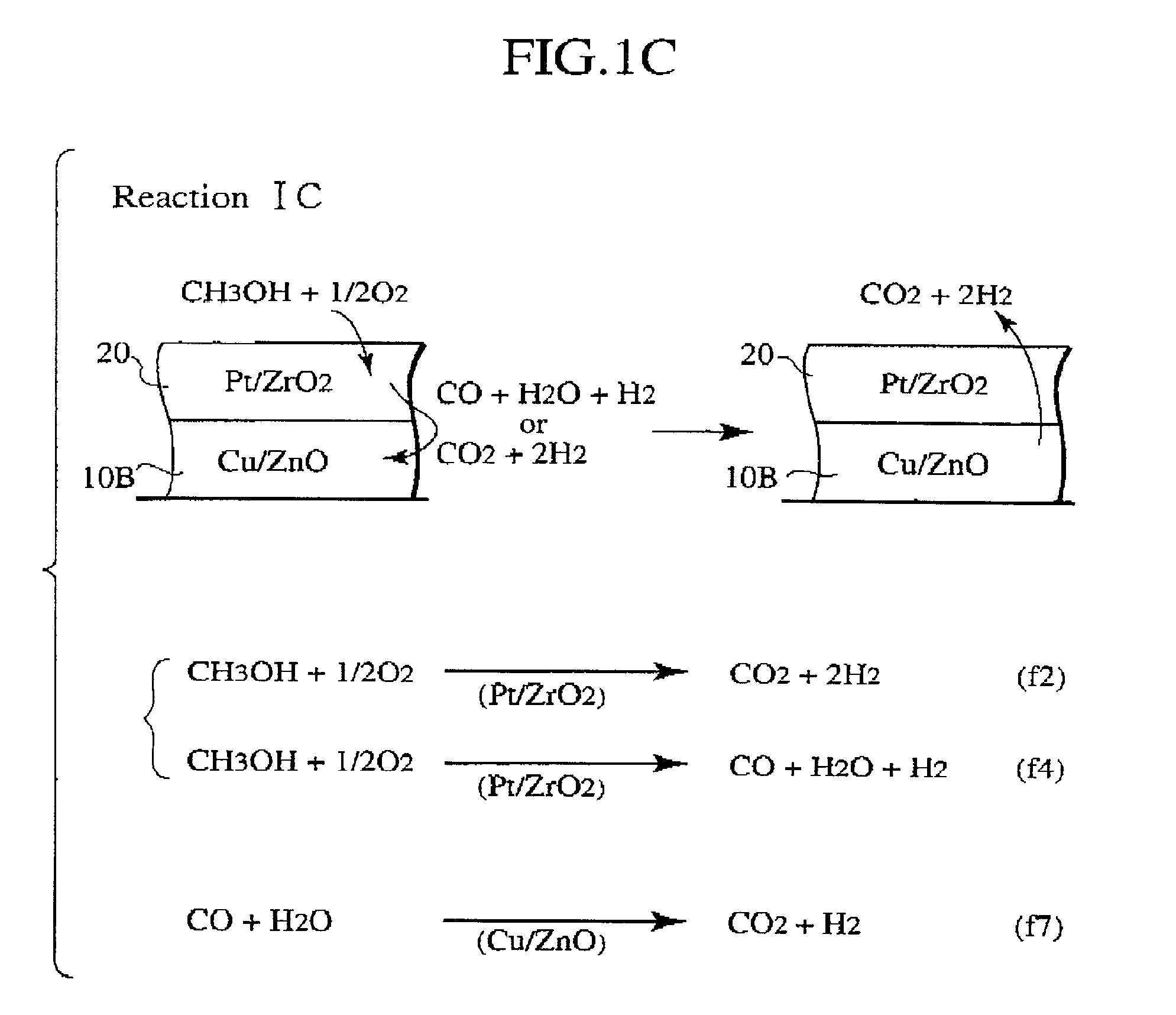Methanol reforming catalyst
a technology of methanol and catalyst, which is applied in the direction of metal/metal-oxide/metal-hydroxide catalyst, final product manufacturing, chemical production, etc., can solve the problems of large quantity of carbon monoxide (co), affecting the operation of fuel cells, and reducing the size of the catalys
- Summary
- Abstract
- Description
- Claims
- Application Information
AI Technical Summary
Benefits of technology
Problems solved by technology
Method used
Image
Examples
example # 2
EXAMPLE #2
[0093] First, the first catalyst layer was formed by using the same conditions as the Example 1.
[0094] Then, the catalyst powders were prepared by spraying the palladium nitride and zinc nitrate aqueous solution onto zirconia-ceria powders until an amount of impregnated metal becomes 5 weight %, drying and burning it. Then, a slurry was prepared by mixing these catalyst powders 100 g and the 8 weight % nitric acid alumina sol 100 g. Then, the second catalyst layer was formed by coating this slurry on the first catalyst layer to get 100 g / L as the catalyst powder weight, then drying it at 150.degree. C. for 10 minutes, and then burning it in the air at 400.degree. C.
[0095] As a result, the catalyst that contained CuO and ZnO as the catalytic component I in the first catalyst layer and contained Pd-Zn alloy-impregnated compound oxide of CeO.sub.2 and ZrO.sub.2 as the catalytic component II in the second catalyst layer was obtained.
example # 3
EXAMPLE #3
[0096] First, the first catalyst layer was formed by using the same conditions as the Examples 1, 2.
[0097] Then, the catalyst powders were obtained by spraying a dinitrodiamine platinum aqueous solution onto .gamma. alumina until an amount of impregnated metal becomes 5 weight %, drying and burning it. A slurry was prepared by mixing the catalyst powders 100 g and the 8 weight % nitric acid alumina sol 100 g. Then, the second catalyst layer was formed by coating this slurry on the first catalyst layer to get 30 g / L as the catalyst powder weight, then drying it at 150.degree. C. for 10 minutes, and then burning it in the air at 400.degree. C.
[0098] In addition, the catalyst powders were prepared by spraying the palladium nitride aqueous solution onto zinc oxide until an amount of impregnated metal becomes 5 weight %, drying and burning it. A slurry was prepared by mixing these catalyst powders 100 g and the 8 weight % nitric acid alumina sol 100 g. Then, the third catalyst ...
example # 4
EXAMPLE #4
[0100] First, the first catalyst layer and the second catalyst layer were formed by using the same conditions as the Example 3.
[0101] Then, the catalyst powders were prepared by spraying the palladium nitride and zinc nitrate aqueous solution onto zirconia-ceria powders until an amount of impregnated metal becomes 5 weight %, drying and burning it. Then, a slurry was prepared by mixing these catalyst powders 100 g and the 8 weight % nitric acid alumina sol 100 g. Then, the third catalyst layer was formed by coating this slurry on the second catalyst layer to get 100 g / L as the catalyst powder weight, then drying it at 150.degree. C. for 10 minutes, and then burning it in the air at 400.degree. C.
[0102] As a result, the catalyst that contained CuO and ZnO as the catalytic component I in the first catalyst layer, contained Pt and Al.sub.2O.sub.3 as the catalytic component IIA in the second catalyst layer, and contained Pd-Zn alloy-impregnated compound oxide of CeO.sub.2 and ...
PUM
| Property | Measurement | Unit |
|---|---|---|
| Size | aaaaa | aaaaa |
Abstract
Description
Claims
Application Information
 Login to View More
Login to View More - R&D
- Intellectual Property
- Life Sciences
- Materials
- Tech Scout
- Unparalleled Data Quality
- Higher Quality Content
- 60% Fewer Hallucinations
Browse by: Latest US Patents, China's latest patents, Technical Efficacy Thesaurus, Application Domain, Technology Topic, Popular Technical Reports.
© 2025 PatSnap. All rights reserved.Legal|Privacy policy|Modern Slavery Act Transparency Statement|Sitemap|About US| Contact US: help@patsnap.com



